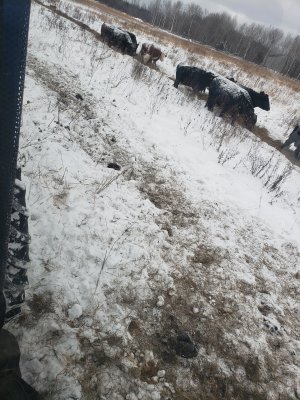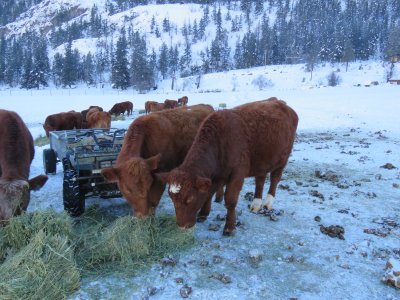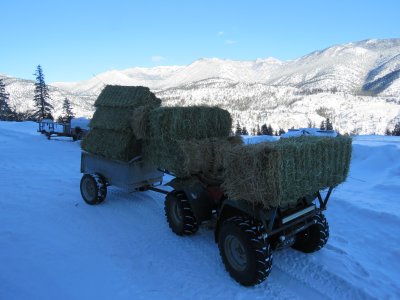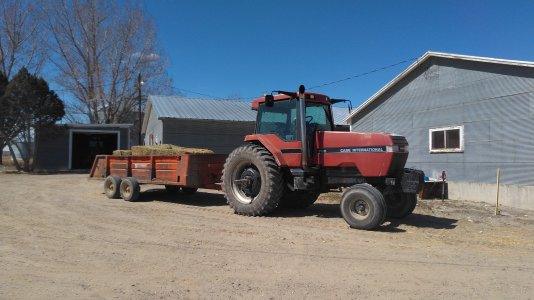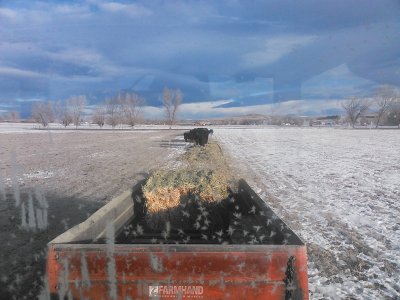One of my herds finding swaths that were unrolled before 11" of snow fell on it. Limiting their access with polywire. 150 head here. I generally prefer to time my unrolling to avoid covering it with snow, but they'll find it anyway, as you can see here.
View attachment 11756
This is the homemade unroller that I use, my son at the controls. This was a rare "really nice day" in December. About 30 degrees.
View attachment 11757
This is the result, taken right after unrolling recently. 5 new swaths, each 1/4 mile long. You can see the old swath from the previous unrolling, between the second and third new swath from the right. These are REALLY crappy bales of mostly giant ragweed stems, and that was unrolled about the same swath density as you see on the new ones here. They've cleaned up everything but that ragweed. I was going to be gone for a few days after unrolling here, so gave them more than I typically do, although it's not uncommon for me to unroll as much as 2 weeks ahead, and then just limit them with polywire. By doing this, you can pick and choose what days you want to be out there in (nasty weather, frozen ground vs. mud, heavy snow coming, etc.) Yes, they do lay on it some (if you're not limiting thier access daily with polywire), and they'll crap on it too some, but as long as it's staying frozen, the manure up here in Minnesota doesn't get alot of chance to spoil much hay........... freezes as fast as it comes out the back end most of the time, and then stays that way till they've cleaned up all the edible hay. This is "the other herd". 85 head here currently.
View attachment 11758

